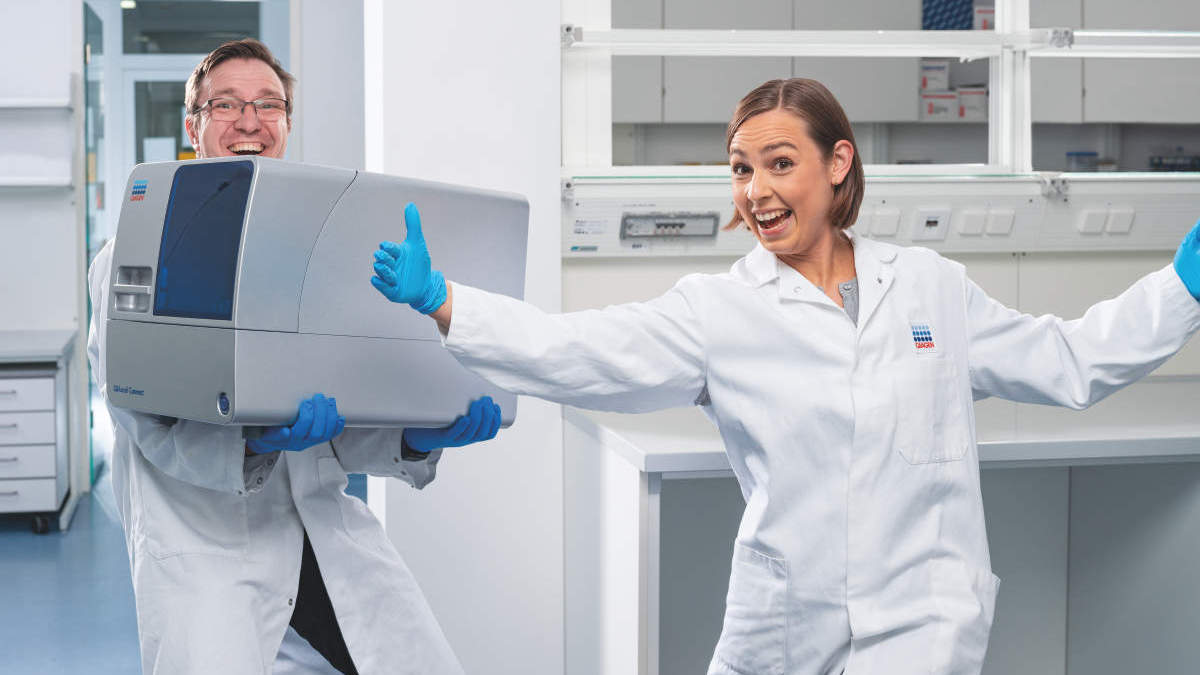
Warning bells, warning bells
QC all the way
Oh, what fun it is to sequence
Having the right tool to keep all errors at bay
We could write the entire song (even though it's not Christmas) to highlight the importance of sample and library quality control (QC) for confidence in next-generation sequencing (NGS) results delivered to your core lab customers, but we guess you got our point.
Let's look at the different steps of the workflow where quality control checks are indispensable and improvements are possible: starting material (DNA and RNA ) QC, QC checkpoints during library preparation, and lastly, QC for the final NGS library.
Degraded or low-quality samples can lead to more than just biased results. They can result in the loss of valuable sequencing material and compromise library complexity. Poor-quality libraries, on the other hand, can significantly reduce the quality of your reads, skewing data reliability and accuracy. This increases operational costs and delays research outcomes for your customers, a situation we're sure you'd want to avoid.
To avoid these pitfalls, you must ask:
Does the sample material meet the recommended quality (purity and integrity) and quantity parameters?
Critical QC parameters for starting material:
Quantity and concentration: Is there enough material to process? What sample-enzyme ratio should I use?
Purity: Are there contaminants, such as proteins or chemicals, that could interfere with my assay? Is there unwanted nucleic acid that could lead to an overestimation of concentration?
Size and integrity: Is the nucleic acid degraded?
Does the library meet the recommended size, quality and concentration parameters?
Critical QC parameters for NGS library:
Quantity and concentration: What is the concentration/molarity of the library?
Size or size distribution: Does the size match the respective acceptance criteria?Contamination: Is there contaminating gDNA or adapter–dimers leading to a loss in sequencing coverage?
Fortunately, your labs can answer most of those questions with innovative quantification and QC methods, such as UV-Vis spectroscopy, Qubit fluorometry or qPCR, and gel and capillary electrophoresis.
Typical application of QC methods in NGS workflows
Fluorometry is suitable for the initial quantification of extracted DNA or RNA before library preparation to ensure sufficient input material.
qPCR helps evaluate the quality and suitability of DNA for library preparation by assessing amplifiability and detecting potential inhibitors.
Fluorometric methods like Qubit or qPCR can accurately quantify the concentration and molar concentration of the library, enabling precise pooling of libraries for sequencing.
The traditional gel electrophoresis method of assessing library size is time-consuming.
Current state of NGS sample and library QC
In recent years, microfluidics-based or capillary electrophoresis has become more popular for simultaneously ascertaining size and concentration.
Automated electrophoresis systems have emerged as a cost-effective fragment separation method, providing higher sample resolution and sensitivity (low detection limit).
When combined with other techniques in the NGS workflow, such as fluorometry, spectrophotometry or qPCR/digital PCR, these electrophoresis systems provide reliable library quantification and minimize manual handling and analysis time.
So what’s the catch? Different analytes (DNA or RNA) may require more than one instrument and set of consumables for sample and library QC, and you may be compelled to trade between analytical sensitivity, convenience and cost-effectiveness.
This is where automated capillary electrophoresis (CE) instruments such as the QIAxcel Connect – a single instrument for QC of starting material and NGS library assessment are seen to improve the standards of NGS workflows, especially when addressing diseases related to liquid biopsies for cancer. Compared to alternative electrophoretic systems, the high throughput nature of the QIAxcel instruments is advantageous in NGS workflow QC. The system fully automates the fragment analysis and quality control of up to 96 libraries and mitigates manual intervention errors by employing ready-to-use gel cartridges and preprogrammed run methods.
Learn more about this automated CE technology in an evaluation study performed by Microba Life Sciences. The study demonstrates that QIAxcel provides higher sensitivity, resolution and precision across multiple library types and concentrations than other electrophoresis systems. Its analysis is versatile, enabling the recognition of varying library fragments, whether they have single or multiple peaks, broad smears, or a combination of all. It is beneficial for the titration of loading concentration for maximum data yield and for identifying undesired library fragments, resulting in confidence in sequencing.
Watch this webinar presented by two of our in-house experts if you want to further your understanding of the what, why and how of NGS sample and library QC.
You can also Visit the QIAxcel Connect Applications page and discover new possibilities on how to do capillary gel electrophoresis for NGS library QC, DNA and RNA QC and amplicon analysis.